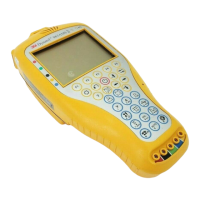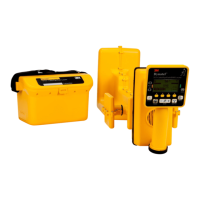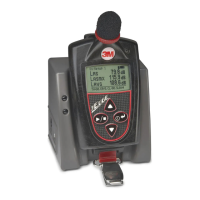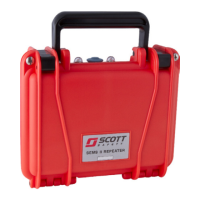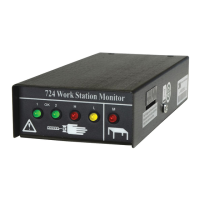24 78-8130-6150-0-F
C. Induction Method
Ifyoucannotmakeadirectconnection,orusethe3M
™
Dynatel
™
Dyna-Couplerclampto
applyalocatingsignalonthetarget,usetheinductionmethod.Whennothingisplugged
intotheOutputJack[T-6]ofthetransmittertheunitwillbeplacedintoinductionmode
whenitisturnedon.Thismethodusestheinternalcoilofthetransmittertogenerate
amagneticfield.Thisistheleastpreferredmethodofapplyingasignalonatarget
conductorbecauseitcaneasilybepickedupbyothernon-targetconductorsinthearea.
However,itisthepreferredmethodofapplyingasignaltomultiplecables/pipesinthe
sametrench,andforthe‘two-personsweeping’application.
3MDynateltransmittersprovideachoiceofinductionfrequenciesandoutputpower
levels.Higherinductionoutputpowerlevelsareneededfordetectingdeeperdepthsand
longerranges.The2200MSeries3Watttransmittersprovidestwoinductionfrequencies:
33kHzand200kHz.The12Watttransmitterprovidesthreeinductionfrequencies:8
kHz,33kHzand200kHz.The200kHzfrequencyiscommonlyusedfordeepercables/
pipesandthelowerfrequenciesareusedtogivelongerlocatedistances.The8kHz
(lowfrequency)inductionhelpsinlocatingshallowfacilities,suchasrisers(12Watt
transmitteronly.)
ThefollowingsectionsreviewNon-sweepingandSweeping(Area)methodsused
withtheInductionMode.TheNon-Sweepingmethodisutilizedwhenaspecifictarget
requirespathtracing.Thetransmitterremainsstationaryin-lineoverthetargetandthe
pathistraced.TheSweepingmethodisutilizedwhenadesignatedareaneedstobe
sweptfornon-specifictargets,forexample,alltheburiedpipesorconductorsinthe
designatedarea.Severalsweepingmethodswillbereviewed.
A. Non-Sweeping (Passive) Induction Mode Locating
• Positionthetransmitteroverthetargetfacility,withthehingeofthetransmitterover
andinlinewiththecable/pipepath.RemoveanycablesfromtheOutput Jack[T-6].
− AligntheInductionDirectionarrowsonthetransmitterwiththetarget
conductor.
• Turnonthetransmitter,selectthefrequencyandselecthighoutputormaximum
outputpowerlevelforbestsignal-to-noiseratio.
• TracethesignalpathwiththereceiverusingtheInductionPeak(IndPk)mode.
TheInductionPeak(IndPk)modeofthereceiverisamodeinwhichtheupperantenna
ofthereceiveristunedtominimizedistortionfromthemagneticfieldofthetransmitter.
UseInductionPeak(IndPk)modewhensweepingdistancebetweenthetransmitterand
receiveris25–60feet(7.6–20m).Beyond60feet(20m)youcanalsousetheSpecial
(single)Peak(SplPk)orDirectionalPeak(DirPk)modes.Special(single)Peak(Spl
Pk)canbeusedformaximumdetectiondepthandrange(neededfordeepconductors
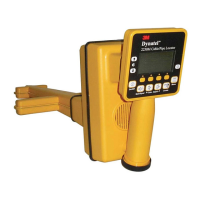
